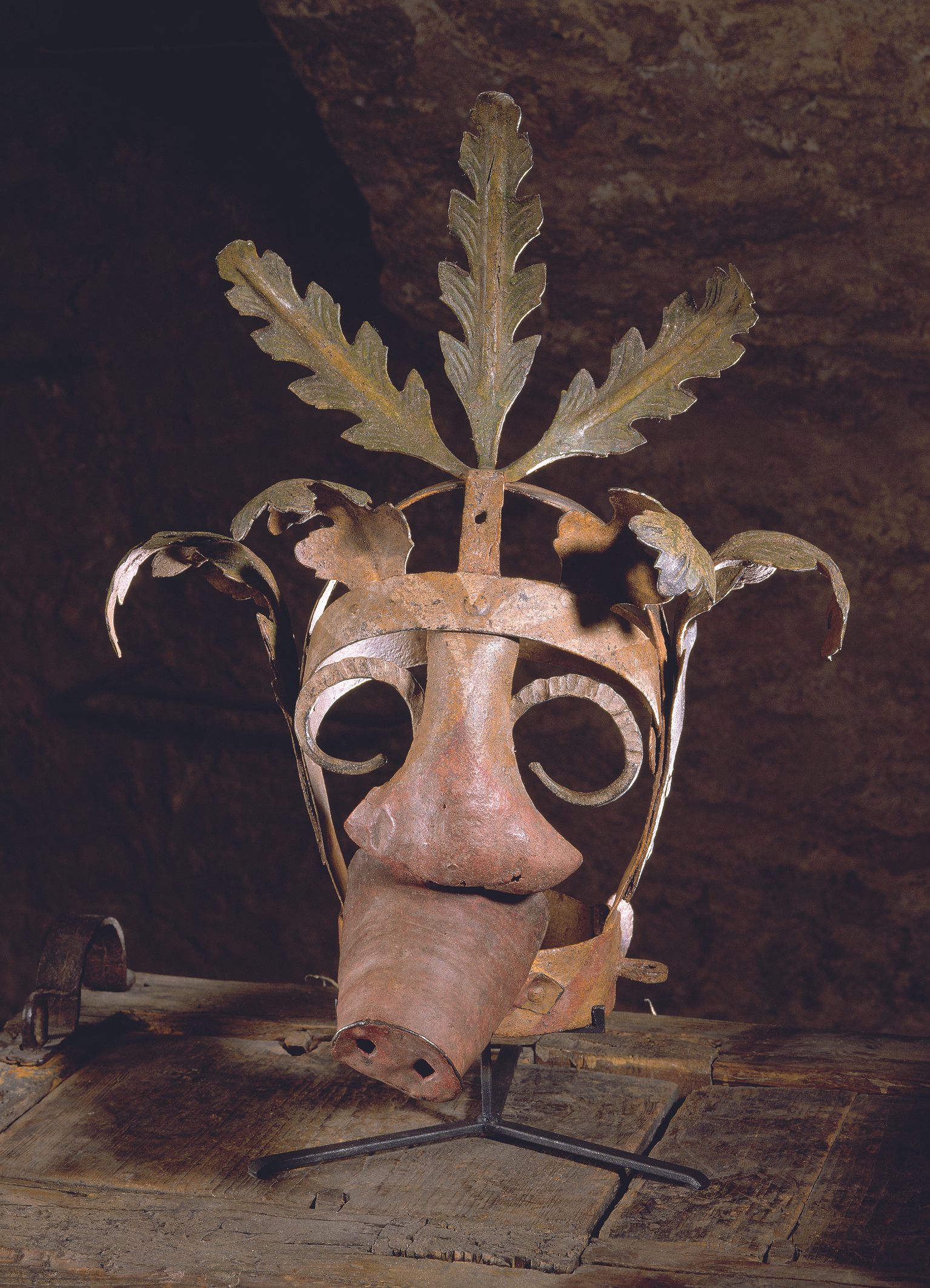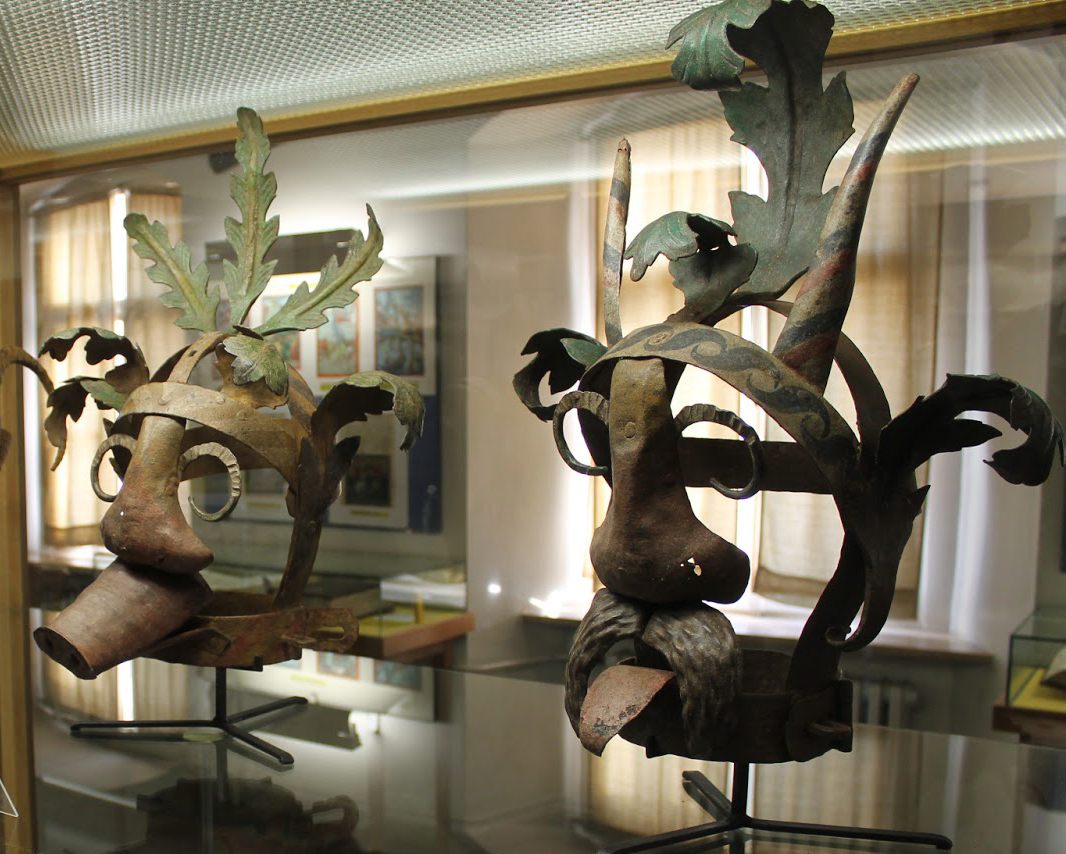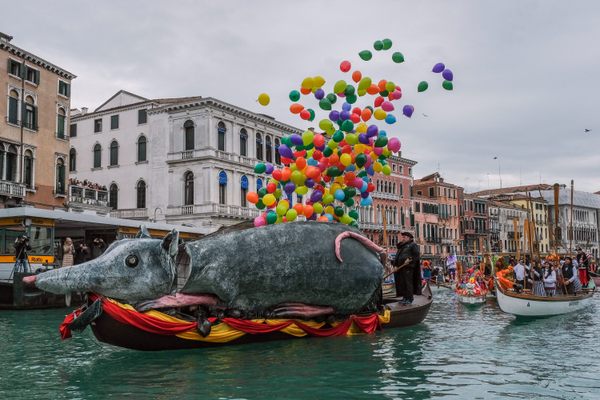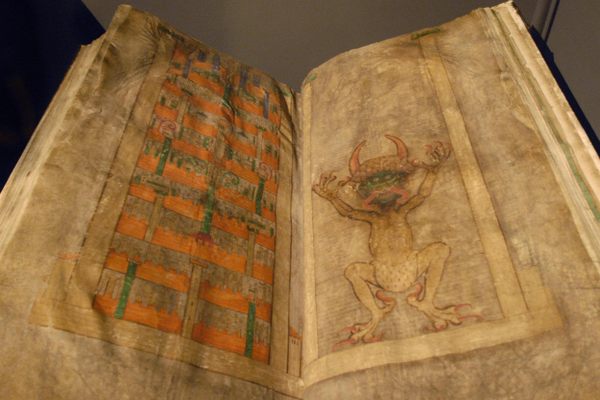These Masks Brought Shame to Gossips, Drunks, and Narcissists
In 17th-century Germany, a “schandmaske” was the prescribed punishment for social transgression.
Extravagance was not well tolerated in medieval Germany. Wealthy citizens and members of nobility could wear sumptuous garments and drape their homes in finery but not those of lower socio-economic status. The size of a man’s collar, the fabric used to make his cloak, even the colors in which he dressed, were regulated by law.
Commoners who dared to wear the symbols of the upper class were fined for their chutzpah. Restoring the social order, though, required more than a monetary payoff. The punishment for such a violation was public shaming, and in 17th-century Germany, as well as elsewhere in central Europe, England and Scotland, not much was more humiliating than the schandmaske, or shame mask.

Peacocking proletariats were sentenced to wear the rooster, a pounded metal schandmaske with a fleshy comb and wattle, elaborately wrought feathers and a long beak. “The masks were fashioned to be as eye-catching as possible,’ explains Markus Hirte, the managing director of the Medieval Crime Museum in the central German city of Rothenburg ob-der Tauber, which has one of the most extensive collections of shame masks in the world and one of the last roosters to survive to the 21st century. “Many even had bells or a trunk that whistled when the person wearing it would breathe just to garner attention.”
Like all shame masks, the rooster was a full headdress that was pulled over the face and locked in place at the back of the neck. The wearer’s speech was muzzled by the massive beak but his eyes were left uncovered: all the better to watch the citizens hurling insults while the offender stood chained to a pillory in the marketplace or was slowly escorted through the town.
Whether they knew the individual personally or not, the community would have instantly recognized the crime through the mask’s symbolism; even today, “cocky” refers to a swaggering, vainglorious man. For those who didn’t, a placard describing the crime was hung around the neck. The punishment itself typically lasted a few hours or perhaps a day, but the shame it brought to the offender lived on long after the mask was removed.

Narcissism was just one of several “antisocial” and illegal behaviors punished by the schandmaske, says Hirte. Each social transgression was represented by different facial characteristics. A man who got drunk and sloppy at a tavern or who was dirty and unkempt could be sentenced to wearing a mask with a pig’s snout, for example. A woman caught gossiping might be forced into a long-tongued, large-eared mask which connoted how she eavesdropped and spoke out of turn about the business of others. A man who was “evil” wore a mask sporting the imagery of the devil: horns, snakes, and molded figures of the fiend itself.
Each was “a way to strip the wearer of identity and create an image outside the norm,” explains Allie Terry-Fritsch, professor of art history at Bowling Green State University in Bowling Green, Ohio. Respectable citizens were not gluttons. Respectable citizens didn’t refuse to bathe. Those were the behaviors of a pig.
Shame masks were “a way of separating law-abiders from law breakers,” Terry-Fritsch continues. “It makes it easier if the offender is visualized as a monster or outside the social order.” Joining in to the shaming of a community member for unacceptable behavior was a way of preserving one’s own status and honor.

While it was a town’s council that decided how long the punishment should last, the entire community played an essential role in its execution. Public humiliation only works if it’s a dialogue between the punished and the punishers. “The community had the chance to visually inspect the offender so that the government could be an example of good governance [and] so they could look upon each other as part of that good government,” says Terry-Fritsch. “The ways in which a convicted offender was punished in the public sphere was a way of cleansing the city of that offense.”
Although most masks did not physically harm the wearer, a few were designed with elements, like spiked inner linings, that caused pain or left lingering scars. One of the most insidious was the scold’s bridle, a simple mask of crisscrossed straps used to punish gossiping women (who were more likely than men to be sanctioned for the transgression). It featured a mouthpiece that could be placed in a fire before insertion. The hot metal scarred the tongue, sometimes even permanently altering speech. “The kind of masks placed on women were much more damaging for social identity long after the mask was taken off,” explains Terry-Fritsch. It was an everlasting memento of moral failing that kept not just the shamed woman on the margins of society, but doomed her family too.
As the Age of Enlightenment descended over Europe in the 18th century, shame masks were largely abandoned in favor of more individualistic punishments like revoking the right to vote, says Hirte. Public humiliation that transforms people into animals, though, has stuck around, argues Terry-Fritsch. It’s a tradition political cartoons show no sign of abandoning any time soon.





























Follow us on Twitter to get the latest on the world's hidden wonders.
Like us on Facebook to get the latest on the world's hidden wonders.
Follow us on Twitter Like us on Facebook